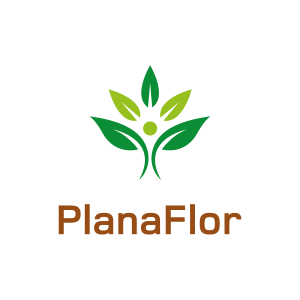PlanaFlor: strategic plan ready to offer policymakers the blueprint for a green new deal for nature-based economic recovery in Brazil
 The PlanaFlor project, which aims to propose a national strategic plan for sustainable development in Brazil through the effective implementation of the Forest Code, has completed its first stage.
The PlanaFlor project, which aims to propose a national strategic plan for sustainable development in Brazil through the effective implementation of the Forest Code, has completed its first stage.
The project now moves on to the crucial stage of political articulation and engagement with stakeholders identified as key to its implementation, including governments, public and private actors, the third sector and academia. This stage requires collaboration with federal and state government agencies to promote the adoption of PlanaFlor as a strategic agent for environmental and economic public policies to be implemented by 2030.
The plan results from two years of work by of experts that sought to recognise, value and promote the country’s environmental, economic and social assets. It details a development strategy with transformative potential for Brazil’s economy and rural landscapes. The plan has been outlined in three documents: a detailed narrative accompanied by an executive summary and a focus matrix, which sets out eight strategic objectives with respective potential impacts and types of activities planned to achieve them over an eight-year timeframe.
These strategies aim to optimise efforts and investments that strengthen the instruments in the Forest Code, which reinforce the country’s natural vocations for sustainable agricultural and livestock production and the conservation and use of biodiversity assets.
Preliminary studies and stakeholder consultation
The project began its activities in mid-2021 by preparing a comprehensive diagnosis of the challenges and opportunities related to implementing the Forest Code, resulting in nearly two dozen preliminary studies supporting the final proposal’s preparation.
The first stage was dedicated to establishing the strategic objectives to be achieved based on diagnoses and analyses of the impact of Forest Code implementation on GDP and agricultural production, conservation and restoration of native vegetation, carbon storage and emissions, as well as identifying deficits and surpluses of APPs and Legal Reserves, among others.

Additionally, the PlanaFlor team sought to systematise and incorporate information and suggestions being worked on by experts from different areas and institutions to create conditions for a new development plan based on agro-industry, the forestry sector and service provision, revitalising the rural economy and creating a new industry of environmental services.
Based on these internal studies and the alignment with various existing proposals and programmes, PlanaFlor was proposed considering land use, forest protection and recovery, and the sustainability of agricultural and livestock production as the main vectors for generating job opportunities, income, entrepreneurship and prosperity in rural areas. In addition, the plan sought references to establish a ‘Green New Deal’ that promotes the protection of the remaining native vegetation, the recovery of degraded areas and the sustainable intensification of farming and forestry while ensuring climate, food and land security.
“Both the voluntary carbon credit market and contributions to nature-based climate action have enormous potential to accelerate and amplify the implementation of the Forest Code. But, for that, it is necessary to invest in a strategic plan on a national scale, which positions this legal framework at the centre of a process of economic recovery on sustainable bases”, said Maurício Moura Costa, BVRio Director.
A plan to boost the implementation of the Forest Code
The Brazilian Federal Law on the Protection of Native Vegetation (Law 12.651/2012), better known as the ‘Brazilian Forest Code’, is one of today’s most relevant environmental public policy instruments and one of the most advanced and detailed legislations on the protection of native vegetation.
The law was adopted after a long process of political debate, with the results obtained being the fruit of possible understanding between the various sectors involved. However, a decade after the last revision, in 2012, its effective implementation is still pending, especially concerning the equation of the vegetation deficit in properties that do not have the minimum coverage required by law. The PlanaFlor team identified about 110.4 million hectares (Mha) of Legal Reserve surplus, 10.7 Mha of Legal Reserve deficit, 22.8 Mha of APPs and 8.1 Mha of APPs deficit.
“The implementation of this law has the potential to improve land use-related governance significantly, with substantial contributions to biodiversity conservation and carbon storage, placing the Brazilian rural sector at the global forefront of sustainability. If fully implemented, the Forest Code can potentially conserve more than 150 million hectares of native vegetation in Brazil, storing about 100 GtCO2e,” said Marcelo Hercowitz, BVRio project manager.
The studies and the final strategic plan documents were jointly prepared by the project’s partner organisations, BVRio, the Brazilian Foundation for Sustainable Development, the Getulio Vargas Foundation and Conservation Strategy Fund-Brazil, as well as consultants specialised in different areas. The Norwegian International Climate and Forest Initiative (NICFI) funds the project.

